- Umang Sagar
- Recent article, Religious
Kumbh Mela And Their Top 13 Interesting Facts
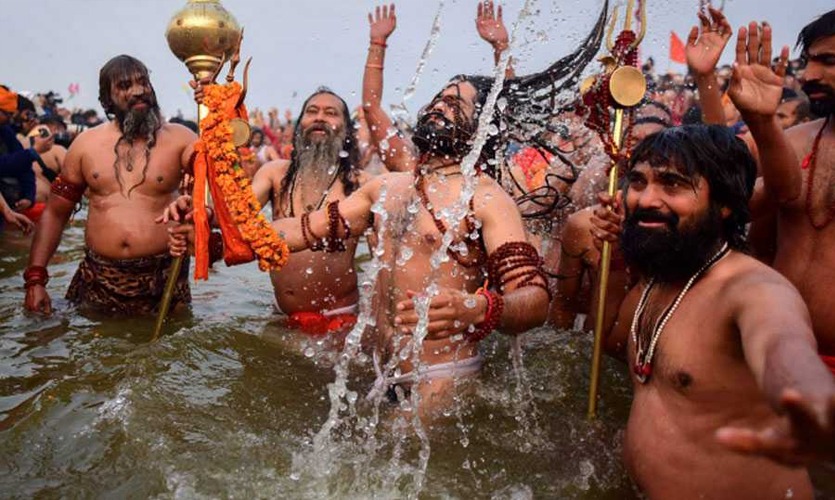
Kumbh is called pot or Kalash and Mela mean a gathering of people together or fair. It is also the world’s largest religious gathering, for a Hindu pilgrimage of faith. In this Mela, people(Hindu) come together to bath in the holy rivers of India to get rid of their sins, as per their belief. Devotees gather from different places in India and other countries around the globe.
According to Hindu myth, It is an important and religious festival that is celebrated four times over the completion of 12 years. Haridwar, Ujjain, Nashik, and Prayagraj these places of the festival circulate between these four pilgrimage sites situated on the banks of the river. Over a completion of 48 days, crores of pilgrims take baths in the holy rivers. Devotees from across the world take part in this Mela.
Where Kumbh Mela Started First :-
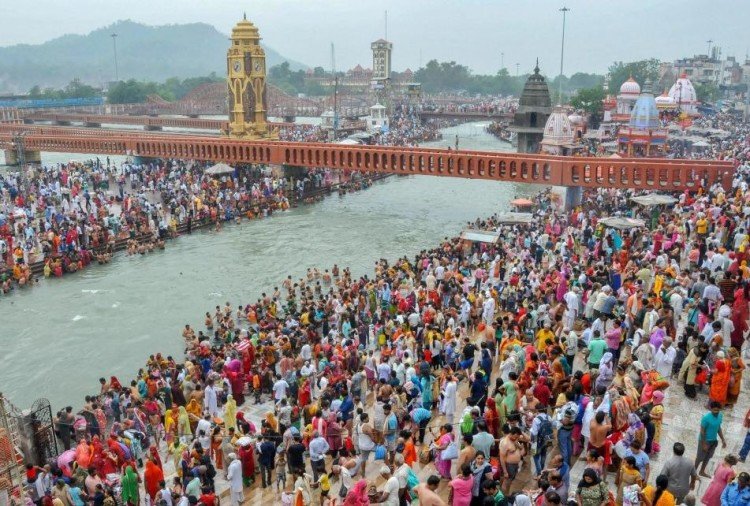
At first, the earliest fair which was derived in 1870 at Allahabad was “Kumbh Mela” by contemporary sources and in 1858 the previous Kumbh Mela would have been scheduled; but on the previous year, no fair was organized in Allahabad because of disturbances resulting from the uprising 1857.
History :-
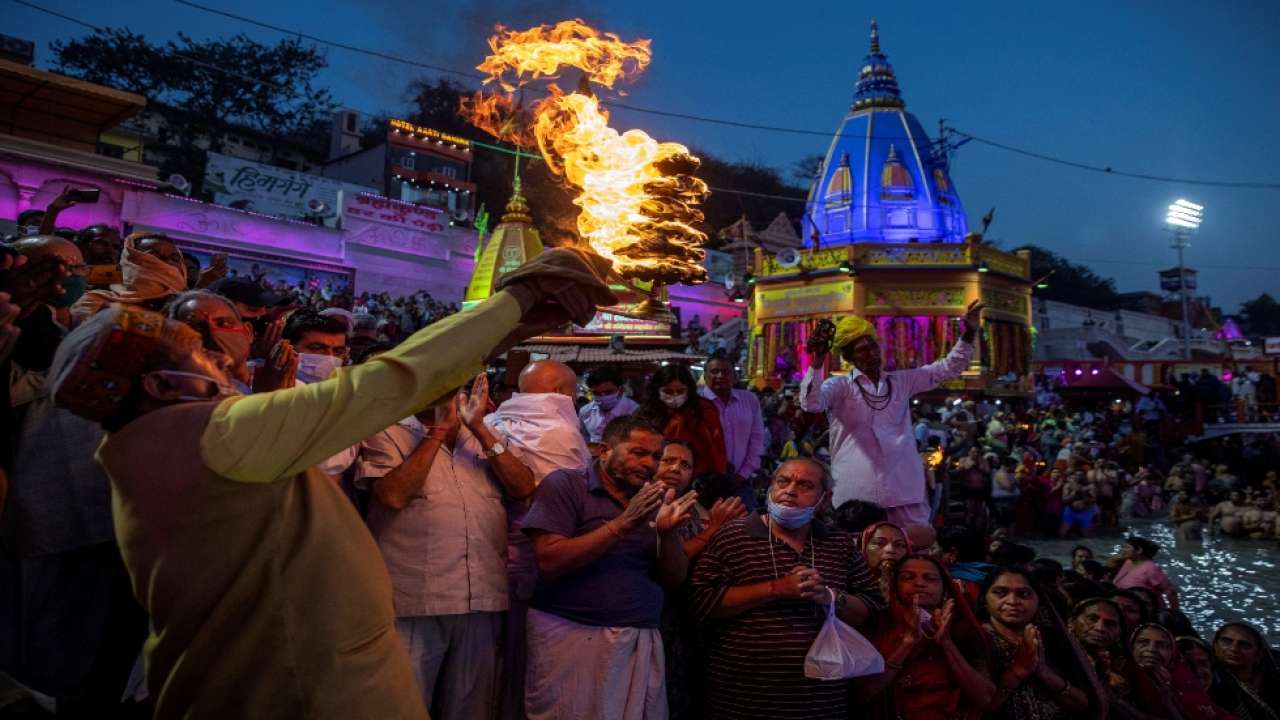
The chronicle of Kumbh Mela is concerned with the days when the Devtas and the Demons unitedly produced nector of immorality as related to the legends. Devtas and the demons agree to complete the work altogether and decided to share the nector of immorality in half.
The Devtas and the demons then added on the shore of the milk ocean that lies in the heavenly region of the universe. The stirring of the milk ocean produced a dangerous poison that Lord Shiva drank without being affected.
After crossing through many obstacles years later, Dhanwantari was born with the nector of immorality in her hands. The Devtas forcibly over the pot with its safety assigned on the four Gods – Brahaspati, Surya, Shani, and Chandra.
Later on, the demons chased the Devtas for several days. During that time the drops of Kumbh dropped at 4 places Prayagraj, Haridwar, Ujjain, and Nashik. These are the places believed to have acquired mysterious powers.
The fight for the Kumbh i.e. the sacred flask between the Gods and demons continued for 12 divine days, which is considered to belong to 12 years for humans. That’s why the Kumbh Mela is celebrated once in 12 years and the festival took place on the mentioned sacred places or holy sites.
It is said that during that period the rivers convert into Amrit and so, many pilgrims from across the world visit the Kumbh Mela to bath in the crux of purity and immortality.
Geography :-
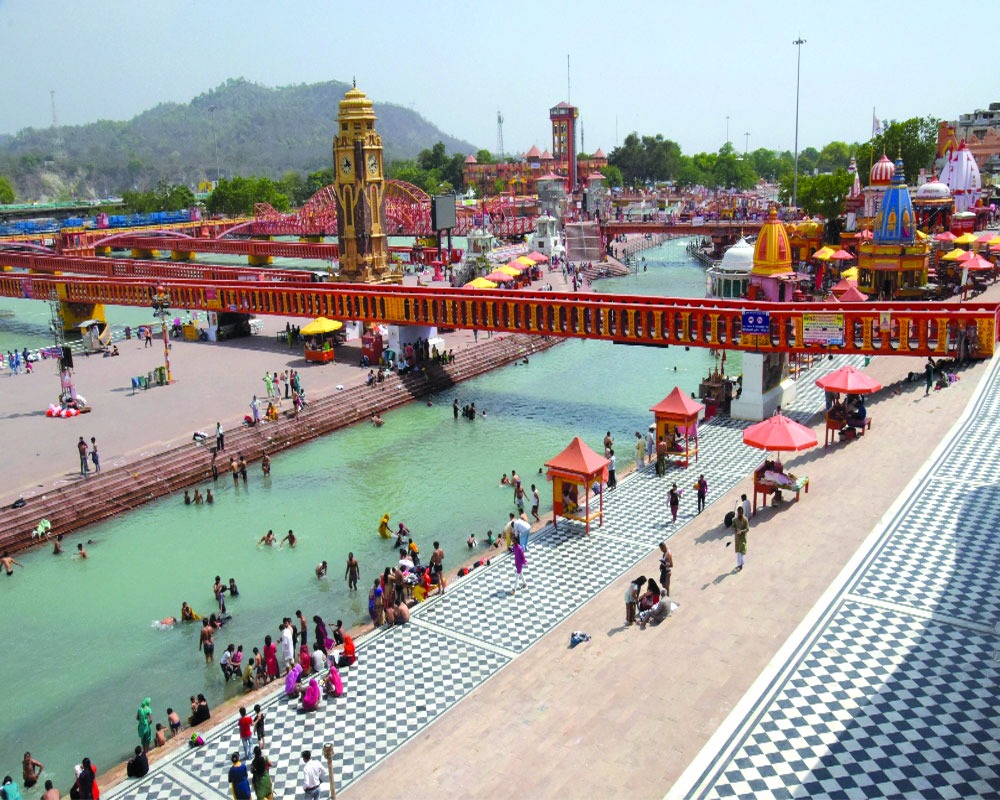
To complete one revolution around the sun Jupiter takes eleven years, ten months, and fourteen days. As they were during the great churning the sun earth and Jupiter aline the same way once in twelve years. This astrological calibration in the space causes the water at the four places where the nectar fell on earth to get stimulated. When devotee takes a plunge in the sacred water during this period of Kumbh it is believed that mightiness in water can cause a positive change in the mind, body, and spirit of human beings, and also cleanses the life free of sins. In Hindu civilization, the sun and the moon describe the human legitimate mind and intellect, Jupiter is known, as godfather the spiritual master. when the human mind and intellect are aligned with the guru, the result is the procurement of eternal life.
Economy :-
Kumbh Mela has been going on from time immemorial, there have been only radiated efforts to understand the statistics-flout event does to local economies in the region where it is held.
- But now the time to understand the Kumbh Mela, what it really is – an awful boost to local economies in parts of India which are most cash-and-job-strapped. It is a major hike to travel industries as many people travel from great distances to reach the Kumbh.
=> As there is a question,
How much does every person who visits the Kumbh Mela spend approximately? We do not know. But we do know that the association of Indian Industry (CII), the apex trade, watches for the 2019 Kumbh Mela to generate business worth 1,20,000 crores. As the government outlay on the festival is 4,200 crore.
If we consider that these numbers may not be radical, this is, by any stretch of the imagination, surprising return on investment. Ample to say that there have hardly been businesses which provide this kind of limit.
Economic Research :-
In 2013, according to two researchers, Sanatan Srivastava and Ajeet Kumar Rai, from the School of Management Studies, Motilal Nehru National Institute of Technology and the Sam Higginbottom Institute of Agriculture, wrote a detailed paper on Technology and Sciences both in Allahabad this called – Socio-Economic Extension of the Kumbh Mela 2013 and the Organisational Aspect of It:
They noted that in 2013, the local management had ranked in $2.2 billion an investment of around $220 million.
All of this combines to one enthralling argument – the urgent need to rejoin the way the Kumbh Mela is recognize in the public sphere. Remember that, for example, a Kumbh Mela in a state like Uttar Pradesh which is indigent and has about 200 million, is invaluable. Uttar Pradesh is one of those places in India where millions of degrees apply for a few thousand clerical jobs.
Work and money the Kumbh Mela generates, so it is enormous value – it ought to be considered a means of transferring money to the needy, both from the government and from private industry.
Places Where The Nectar Fell On Earth

Prayag (Allahabad), Haridwar, Trimbakeshwar-Nashik, and Ujjain. Pujari at other places has also effort to boost the status of their tirtha by conforming to the Kumbh myths. Festivals have been claimed as Kumbh Mela, include Varanasi, Vrindavan, Tirumakudal Narsipur Kumbhakonam and Rajim .
The location of the Sun, Moon, and Jupiter in different zodiac signs compose the location of the Kumbh in each of the four places.
1. Kumbh in Haridwar: When the Sun is in the zodiac sign Aries and Jupiter is in Aquarius it is grip in Haridwar. Ganga river flowing at Haridwar.
2. Kumbh in Prayag: When the Sun is in Capricorn and Jupiter is in Taurus, it is grip in Allahabad (Prayag). River limp at Prayag is Triveni sangam (intersection of Ganga Yamuna, Sarawati).
3. Kumbh in Nasik: When Jupiter enters the zodiac sign Leo it is grip in Nasik. It is also gripping in Nasik, when Jupiter, Sun, and Moon enter the zodiac sign Cancer on Amavasya. River flowing at Nasik in the Godavari.
4. Kumbh in Ujjain: Ujjain, one of the holiest places in India, is located on the banks of the holy river Kshipra in the western region of Madhya Pradesh. Kumbh in Ujjain is grip when a rare arrangement of planets takes place, which happens once in 12 years. When the Sun is in the zodiac sign Aries and Jupiter in the zodiac sign Leo, it is grip in Ujjain. All in all its relevance to the zodiac ‘Leo’ meaning ‘Simha’ in Sanskrit, the Kumbh is also mentioned as ‘Simhasth Kumbh’.
Controversy such as :
According to The Imperial Gazetteer of India, an outbreak of cholera occurred at the 1892 Mela at Haridwar, which led to the rapid improvement of arrangement by the authorities and the formation of Haridwar Improvement Society, and in 1903 about 400,000 people attended the fair. During the 1954 Kumbh Mela stampede at Allahabad, around 500 people were killed, and scores were injured. Ten million people gathered at Haridwar for the Kumbh on April 14, 1998. Around 10 million people from around the world participated in the ‘Maha Kumbh Mela’ at Prayag (Allahabad) in 2001.
Kumbh Mela In Pandemic :-
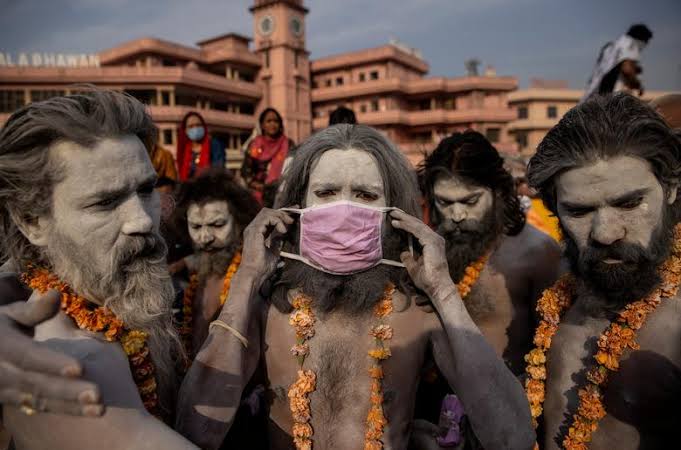
The 2021 Kumbh Mela tempting a large mob, and almost 3.5 million pilgrims have attended the incident. The Uttarakhand government rejected to cancel or break off the Mela. Before its invasion, the Union Health Minister issued a list of Standard Operating Procedures as preventive measures to avoid the ahead spread of COVID-19.
In a letter to Uttarakhand Chief Secretary, Union Health Secretary Rajesh Bhushan “strongly” bulging the concerns raised by the high-level central team during its visit to Uttarakhand and about the “need for harsh measures to control the spread of Covid-19 during the continuing Kumbh” agglomeration in the state.
Kumbh is at the bank of the River Ganga. Maa Ganga’s blessings are there in flux. So, there should be no corona,” Citing other differences between the Kumbh Mela in Haridwar and Nizamuddin Markaz, Rawat said, The devotees attending Kumbh our own people. Sacred men over India gather at Haridwar for Gangasnan at Kumbh Mela.
A statement liberated by the Chief Minister said, that during the Mela, there should be no obstacle as the Mela is open for all. At the Kumbh Mela, many devotees rejected to follow the social distancing norms and wear masks. The state’s Inspector General Sanjay Gunjyal was recited by the media as saying, We are continuously enthralling to people to follow COVID-19 norms, however, due to large crowds, it is practically impossible to issue challan.
Top 13 Intresting Facts Of Kumbh Mela
The festival is billed as the “biggest gathering on Earth”; in 2001 more than 40 million gathered on the busiest of its 55 days. The 2001 Mela was unusually significant due to the planetary positions at the time, a pattern that repeats only once every 144 years.
Mela takes place when the planet Jupiter enters Aquarius and Sun enters Aries.
Ardha Kumbha Mela: Held at Haridwar and Prayag (Allahabad), every 6 years, Purna Kumbha Mela: Only at Prayag, every 12 years, Maha Kumbha Mela: Only at Prayag, every 144 years.
First written evidence of the Kumbha Mela can be found in the accounts of Chinese travelers, Hiuen Tsang or Xuanzang (602 – 664 A.D.)who visited India in 629 -645 CE, during the reign of King Harshavardhana.
Various sadhus (hermits) visit the Mela; including Nagas, who do not wear any clothes; Urdhwavahurs, who believe in putting the body through severe austerities; Parivrajakas, who have taken a vow of silence; Shirshasins, who stand 24 hours and meditate for hours standing on their heads; Kalpvasis, who bathe thrice a day.
It’s a spectacle to behold various akharas makingit to the river for the great bath on Kumbh days. An akhara is a wrestling arena. It is an organization of the different sects of saints, vairagis, and yogis who have renounced the world. Akharas are divided into different camps according to the concept of God they worship. Shaiva Akharas are for followers of Lord Shiva, Vaishnava or Vairagi Akhara are for followers of Lord Vishnu and Kalpwasis are for followers of Lord Brahma. An Akharais further divided into 8 davas (divisions) and 52 marhis (centers). Each marhi performs its spiritual activities under a Mahant. The central administrative body of the Akhara is Shree Panch (the body of five), representing Brahma, Vishnu, Shiva. Shakti and Ganesha. The five-member body governing an akhara is elected during every Kumbh Mela for a period of 4 years.
It is believed that one day and night in heaven makes one human year.
The fight between Gods and Demons went on for twelve days and twelve nights equal to twelve human years. That is why Kumbh Mela is celebrated every twelve years.
In 2010, the Indian Space Research Organisation took satellite pictures of the crowds with the hope of improving the conduct of the festival in the future. Amrita Kumbher Sandhane, a 1982 Bengali feature film directed by Dilip Roy, documents the Kumbh Mela.
Various documentaries have been spectators to this colossal phenomenon, the most notable among them is Nick day’s “Shortcut to Nirvana: Kumbh Mela”, which was released in 2004.
The Prayagraj Kumbh Mela 2019 set 3 Guinness World Records for
Largest sanitation drive.
Largest hand painting theme.
Largest parade of Buses.
The earliest mention of Kumbh Mela dates back to 644 CE in the writings of Chinese traveler Hieun Tsang. He mentioned a gathering at the confluence of two rivers where people bathed to wash their sins away. This means that the festival is about 2000 years old.
The first documented account of the Kumbh Mela was recorded by a Chinese traveler Huan Tsang who visited India in 629 -645 CE. The festival is over 2,000 years old.



